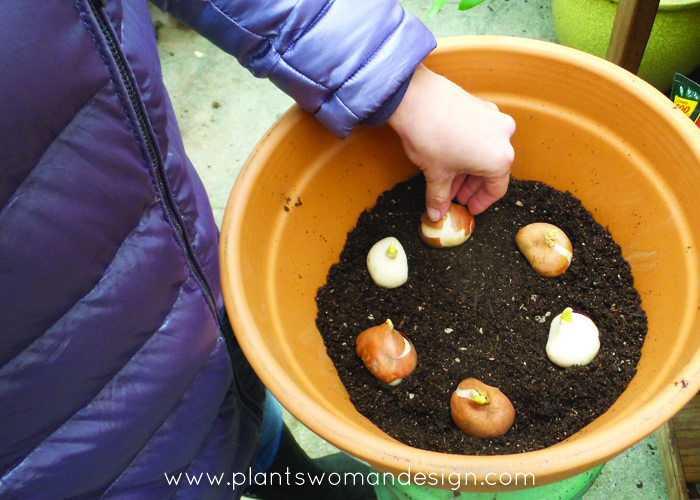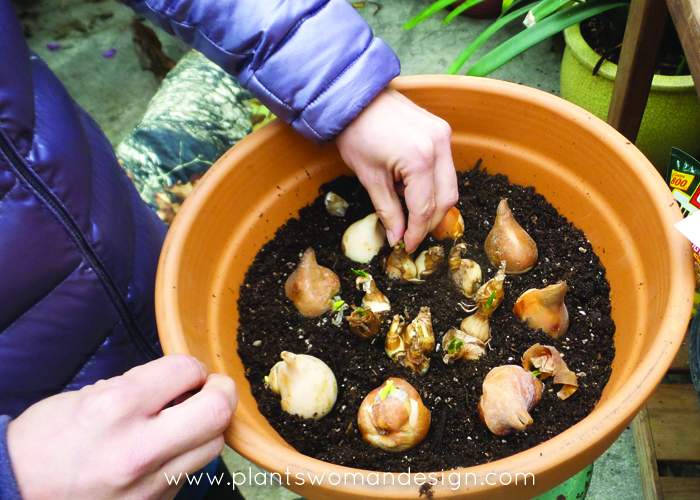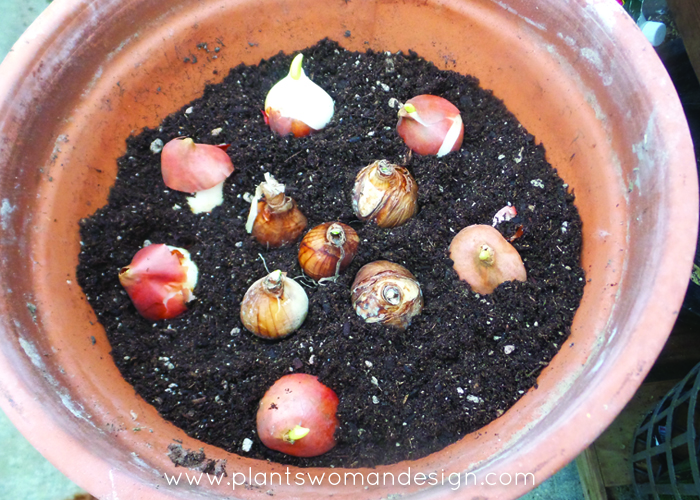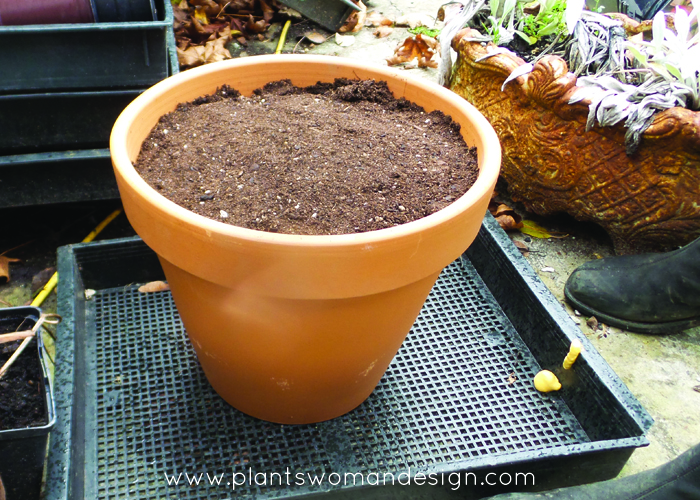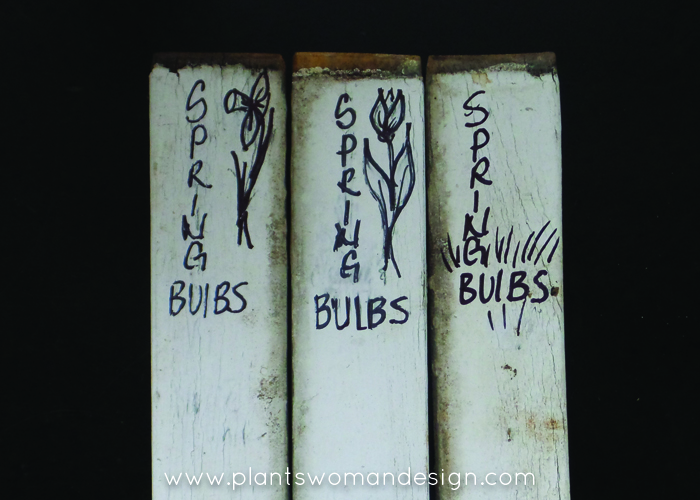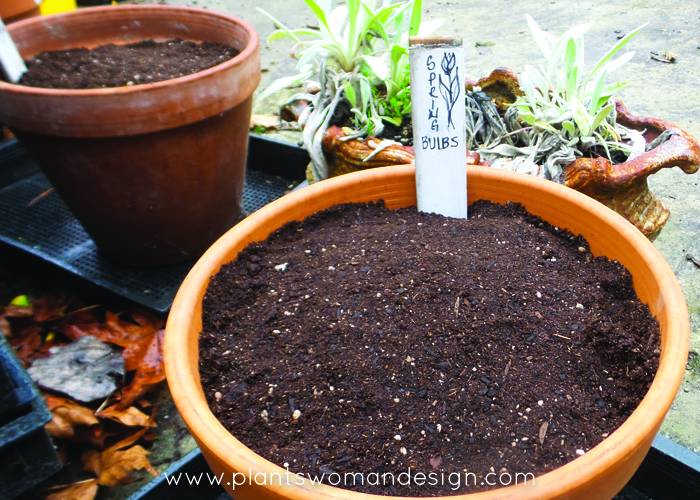
by Susan | Nov 13, 2015 | LB Tutorial: Bulbs & Tubers
I recently went to a lecture by Helen Dillon, a great plantswoman from Ireland. She was amazing, great personality and good showcase of her garden through pictures. One of the things she showed was her method of layering bulbs. The pots that she used were medium sized metal garbage cans.
Today, using her methods, I did some containers of my own. I like to use clay pots because they go better with the rest of my garden. When they are blooming I tuck them into a garden bed that needs color or just used on their own to bring a breath of spring that lasts for several weeks.
Here are some of the bulbs we will use in our containers. You will also need some fresh potting soil, and bulb food. Choose a good color combination that you will enjoy. The important thing is to choose a late tulip, a mid season tulip or narcissus, and small crocus and iris that are both early season bloomers.
Place soil in about 1/3 of the container. Add the late season bulbs around the soil and sprinkle with bulb food.
Add a layer of soil and firm down. Add the mid season bulbs next. You can make patterns by putting them in groupings within the pot if you wish.
Add the small crocus and iris, follow with the bulb food and more soil. I usually put the shorter growing bulbs around the edge and the taller ones in the center. The yellow crocus will look great with the dark purple iris.
The container will have a succession of flowers starting with the crocus and iris, then the mid season tulips or narcissus will come up through the dying foliage and the late season tulips will follow.
Don’t worry about the bulbs being planted deep. The bulbs will come up anyway. They can be replanted after bloom in the garden for next year’s flowers.
When finished, set the pots outside where they will stay cool and get watered. Putting the containers on a plastic tray will keep them from freezing and cracking. It is best to use a freeze proof container but the air space under the pot will add an extra layer of protection.
I like to re-use and recycle things so the plant labels are pieces of wood from a broken shutter. Simply use a Sharpie to describe the planting and maybe draw a little flower to decorate. Best of all have fun doing it, and enjoy the flowers this next spring.

by Susan | Nov 26, 2014 | LB Tutorial: Bulbs & Tubers
In between rain squalls yesterday I ran out and planted the bulbs I had stored in my refrigerator. I had planned on doing it sooner but the freezing weather for almost two weeks delayed the process. I like to group bulbs together for maximum impact, no rows of tulips and daffodils for me.
Here are some step by step planting directions.
1. Scout out a location. I sometimes do it from the inside of the house so I can see where they would be popping up. Two reasons really — It is usually cold and rainy when they appear and it is important to see it from inside to draw you outside to see them up close, and it is usually cold and rainy when you plant them so looking outside with a cup of coffee in your hand is a good way to get ready to go outside and do it.
Think about what is happening around the spot you have chosen. Perennials that will come out later and cover dying foliage is a good background or companion planting. Nothing too invasive or they will not get along well and the bulbs may not be successful over time. Deciduous shrubs are also great because they are not always interesting before the leaves come out and the bulbs will show well against the tracery of branches. Evergreen shrubs that flower in contrast to the bulbs are also a good choice. Like a Azalea Autumn Amethyst with late blooming orange parrot tulips. Purple with orange/purple/red blooms can add wow!
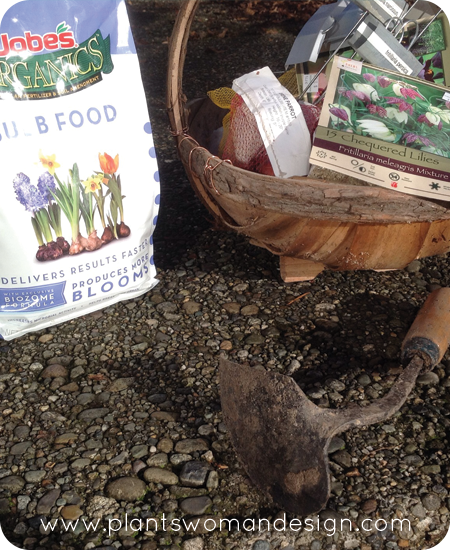
2. Gather your materials together. Grab your bulbs, pre-made markers to identify the location, a ‘claw’ (my favorite gardening tool), and bulb food.
3. Prepare your planting area and plant. Remove any weeds and dig a space with enough depth and breath to accommodate the bulbs. When you plant in a group you just dig one hole per group.
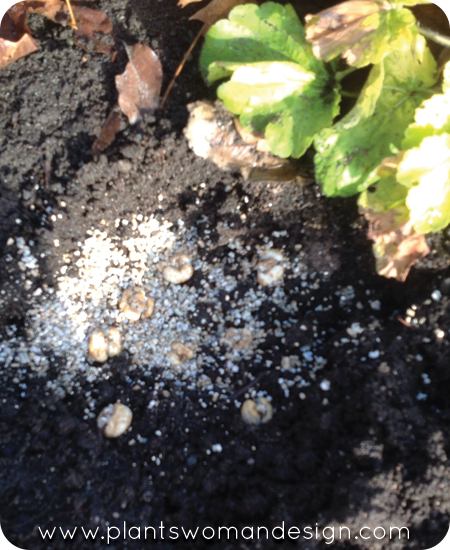
a prepared hole with bulbs and bulb food.
The general rule is depth three times the size of the bulb. This means a one inch bulb would be planted three inches deep. This is most important with small bulbs not to plant too deep. Spread isn’t that important but you want to leave room for them to multiply so I usually leave a fist sized space between them. I add the bulb food on the bottom of the prepared area, then place the bulbs on top with the bud end up. This usually means the pointy end but it is sometimes hard to tell . Look for bits of roots which would have been the bottom.
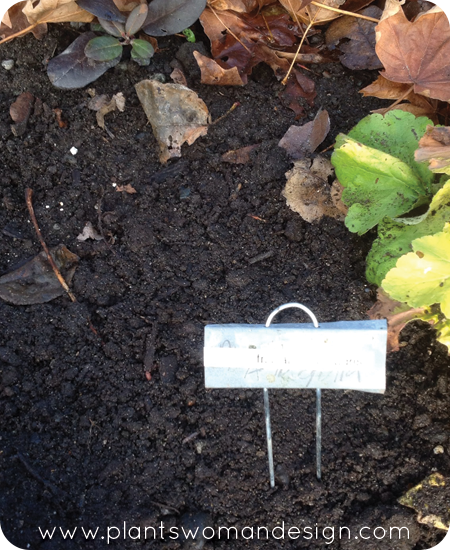
all covered up and labeled
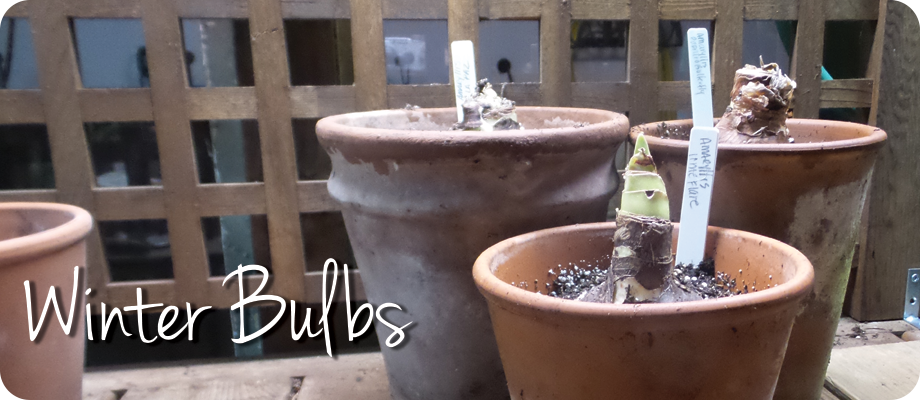
by Susan | Nov 19, 2014 | LB Tutorial: Bulbs & Tubers, Little Bytes
I love the bright colors of winter bulbs at Christmas. Somehow the colors and freshness of living plants with the rest of the Christmas decorations are such a great contrast. Surprisingly almost any bulb can be forced for winter color but I love Amaryllis bulbs so I grow those each year. I usually try and experiment with new varieties. This year Amaryllis Papilio Butterfly beckoned along with Amaryllis Lime Flare and Amaryllis La Paz.

www.easytogrowbulbs.com
The orchid like flower of the Amaryllis Papilio Butterfly, with its lime green petals and dark maroon accents, is truly exotic looking. It takes about 40 -60 days to bloom so getting it in the pot early is important if you want a bloom during the Christmas season.

www.easytogrowbulbs.com
Since we are on the subject of lime green the Amaryllis Lime Flare has brilliant lime green petals which I just love. This one flowers in 40-70 days.

www.easytogrowbulbs.com
Amaryllis La Paz has similar coloring to the Amaryllis Papilio Butterfly but the maroon is more pronounced and the petals thin and recurved back. Exotic looking as well, they sometimes bloom a little later than the Papilio Butterfly. Allow 50-70 days for full bloom.
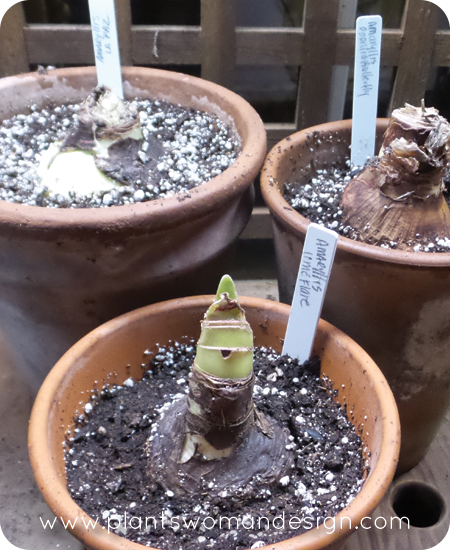 When you get your bulbs, put them in a pot with the top of the bulb about 3 inches above the soil level. Evenly moist soil but not saturated will make the bulbs grow well. Since they don’t like saturated soil keep them a little on the dry side. I like to use heavy terracotta pots and keep them there when I bring them in for display. Putting moss around the base of the bulb gives a festive finished look. Because the blossoms are heavy support is usually necessary. I like to use twigs around the outside of the bulb with either twine or raffia to tie it all together. Dressing it up with ribbon or copper wire is also fun.
When you get your bulbs, put them in a pot with the top of the bulb about 3 inches above the soil level. Evenly moist soil but not saturated will make the bulbs grow well. Since they don’t like saturated soil keep them a little on the dry side. I like to use heavy terracotta pots and keep them there when I bring them in for display. Putting moss around the base of the bulb gives a festive finished look. Because the blossoms are heavy support is usually necessary. I like to use twigs around the outside of the bulb with either twine or raffia to tie it all together. Dressing it up with ribbon or copper wire is also fun.
Mine are in the greenhouse right now. I’m not sure how greenhouse cultivation will effect bloom time but I’ll keep you posted. I would imagine you could manipulated it by planting them at different times to have your bulbs blooming at the same time or through out the holiday season.
Being halfway through November already is a little late in the season for blooms by Christmas. But, do you have a gardener to buy for this year? These wonderful bulbs make a great gift and will provide lovely color this winter to tide your gardener over until spring gets here!
Do you have a favorite holiday bulb or plant? I’d love to hear about it.
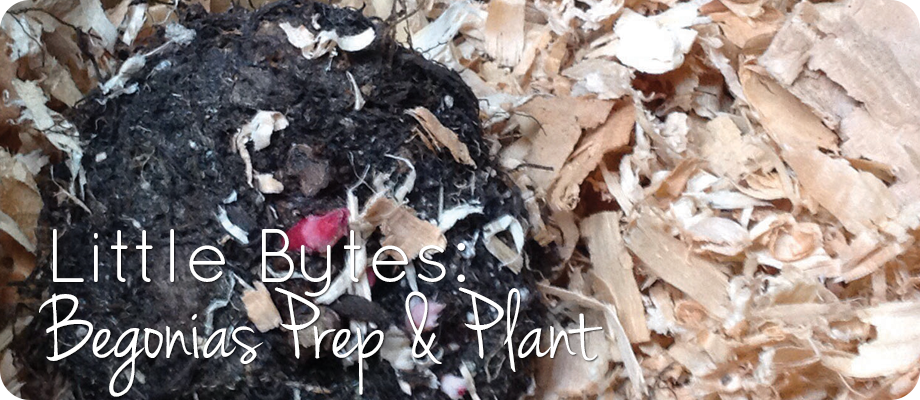
by Susan | Apr 4, 2014 | LB Tutorial: Bulbs & Tubers, Little Bytes, Plantswoman Design
If you have been following the blog for a while you will remember in fall we pulled our begonias out after the first frost and stored them over the winter. If you didn’t have any to winter over they are available at the Nursery now and you can grab a couple of tubers and follow along with us. It is time to bring them out of their little dark box and bring them into the light. We will give them a soft bed of soil and water and they will be on their way again. Let’s have a look at the box where we stored them.
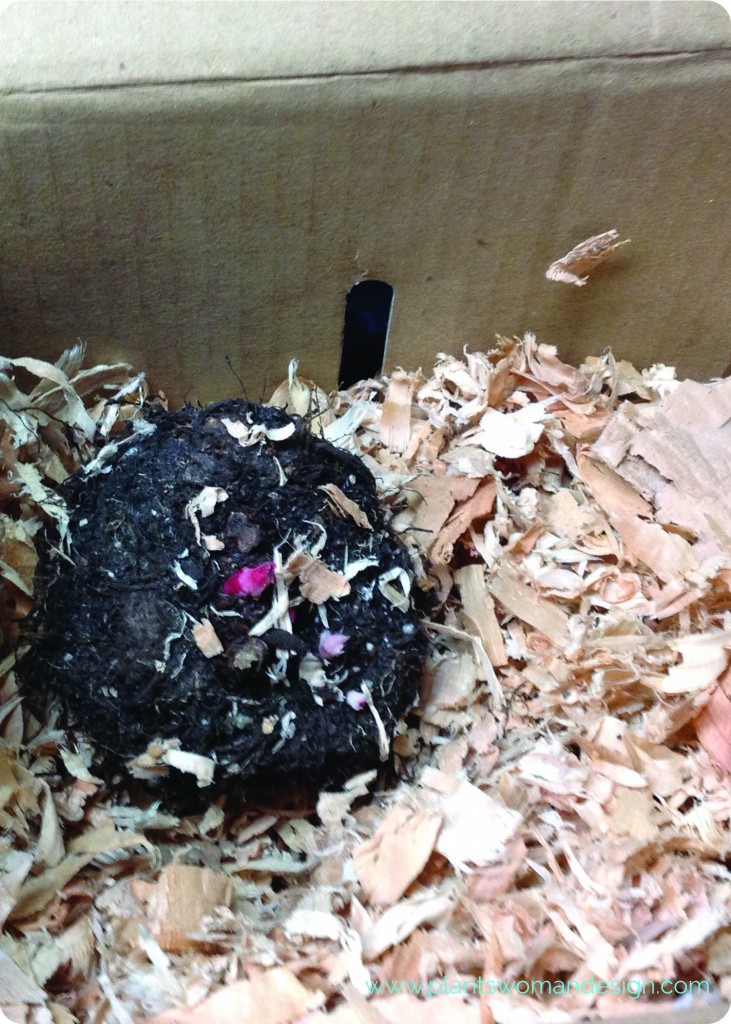 See the little growth points of pink? That is where the first leaves will come out and start their growth again. The tuber is solid and firm with no soft parts or mold (which is how it should be).
See the little growth points of pink? That is where the first leaves will come out and start their growth again. The tuber is solid and firm with no soft parts or mold (which is how it should be). I usually prepare a long tray with fresh seed starting soil mix. This shallow tray is perfect for waking your begonias up, then they will be transferred to the container you want them to live in through the summer. We will transfer them after they have put on some good growth and the weather is warmer. You could put them straight into the pot when it gets warmer but it will take longer to get going and longer to get flowers. As you can see from the little buds showing they are ready to go too.
I usually prepare a long tray with fresh seed starting soil mix. This shallow tray is perfect for waking your begonias up, then they will be transferred to the container you want them to live in through the summer. We will transfer them after they have put on some good growth and the weather is warmer. You could put them straight into the pot when it gets warmer but it will take longer to get going and longer to get flowers. As you can see from the little buds showing they are ready to go too.
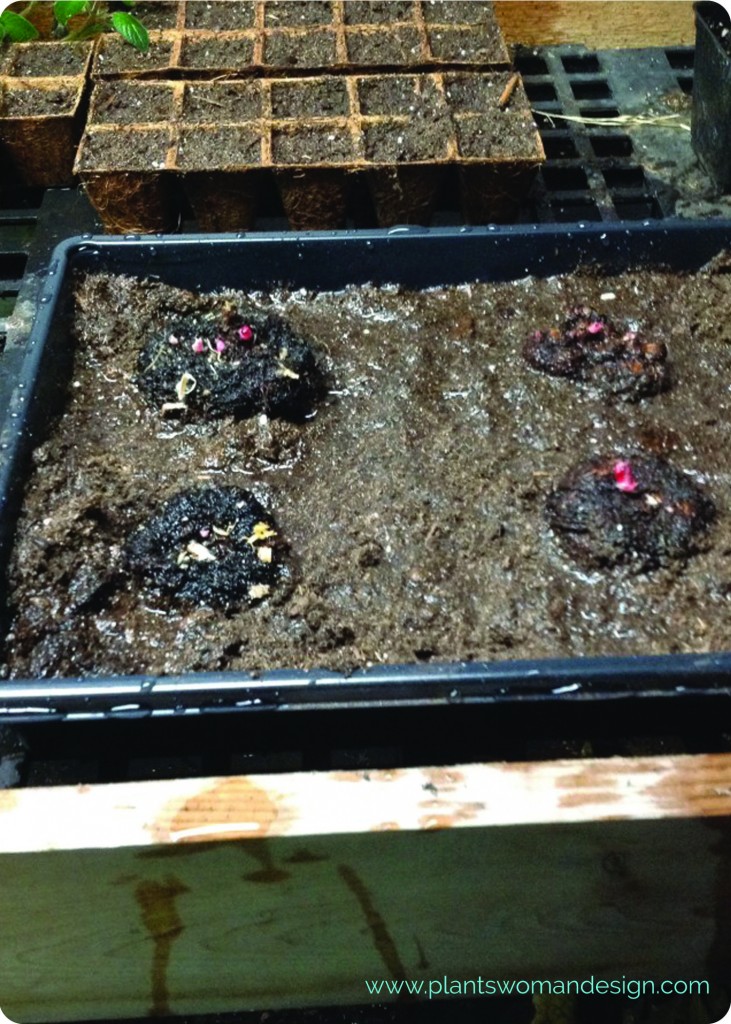
Let’s soak the soil through so there are no dry pockets. Then just set the tuber onto the soil and gently settle it down so the soil comes up about 1/2 way up the side. Now all you have to do is wait, water, wait, warm…. Maybe waiting is the hard part. It is one thing that gardeners have to learn that is very difficult. That’s it…… Really…. That’s it.
There is always a danger when going to the nursery just to buy a tray and seeding soil. Passing by other things that call to you and in this case it was a sweet little Hymenocallis.
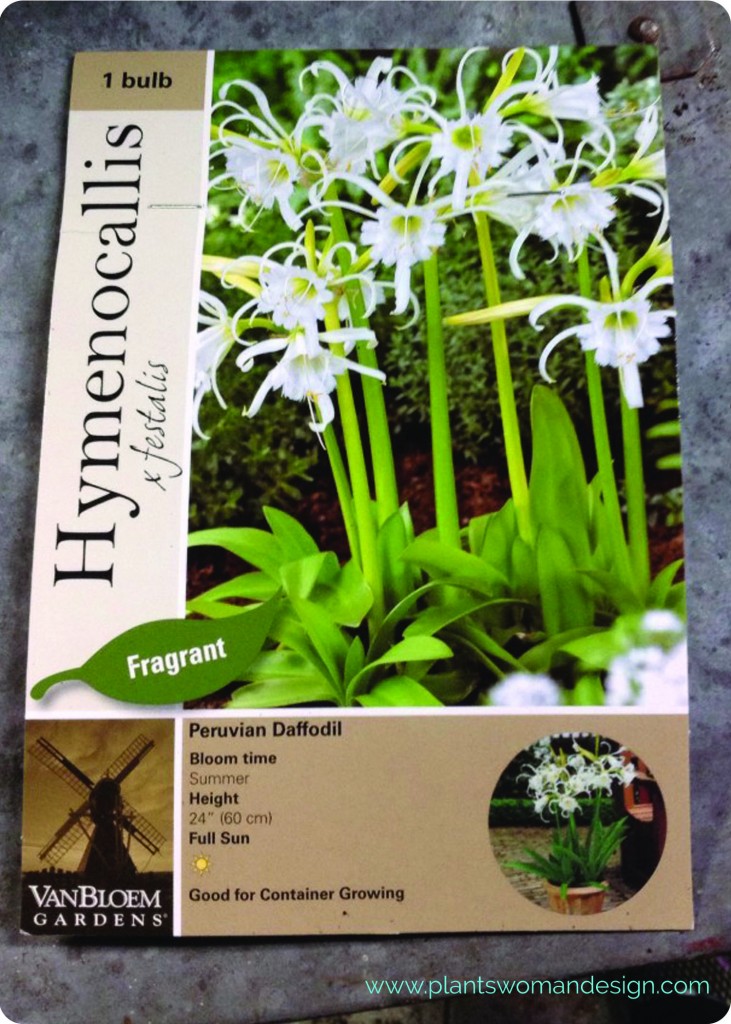
One of the funnest things about these is they can be put into a pot and brought out to brighten a spot in your home and bring in a little fragrance. This is super easy too. You can choose a similar flower or bulb. Look for a recommendation that it can be grown in a container. This will keep it easy. Just grab a pot that you like because this bulb will stay in it.
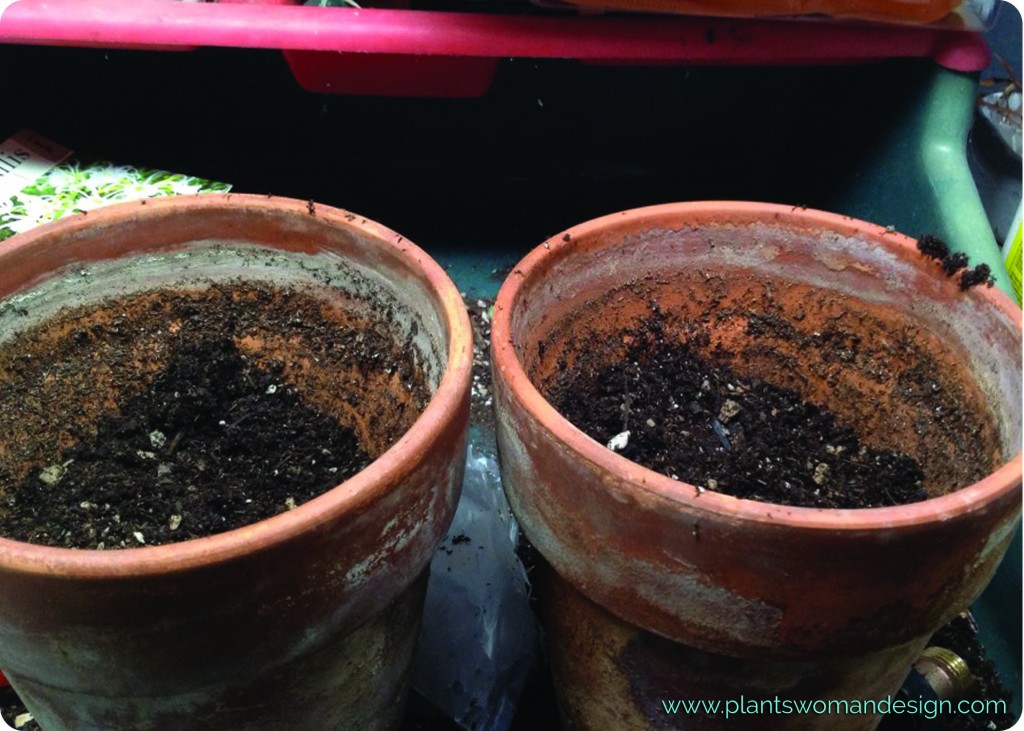 First put in enough soil to bring the bulb to the level on the back of the package. This is a fairly deep pot so there is enough room to do it. If you use a pot that is more shallow you may have to stake the bulb when it blooms. Just be sure there is at least 1/2 of the pot filled with soil before you plant the bulb. Sprinkle a little bulb food in the container and then put the bulb on top of it.
First put in enough soil to bring the bulb to the level on the back of the package. This is a fairly deep pot so there is enough room to do it. If you use a pot that is more shallow you may have to stake the bulb when it blooms. Just be sure there is at least 1/2 of the pot filled with soil before you plant the bulb. Sprinkle a little bulb food in the container and then put the bulb on top of it.
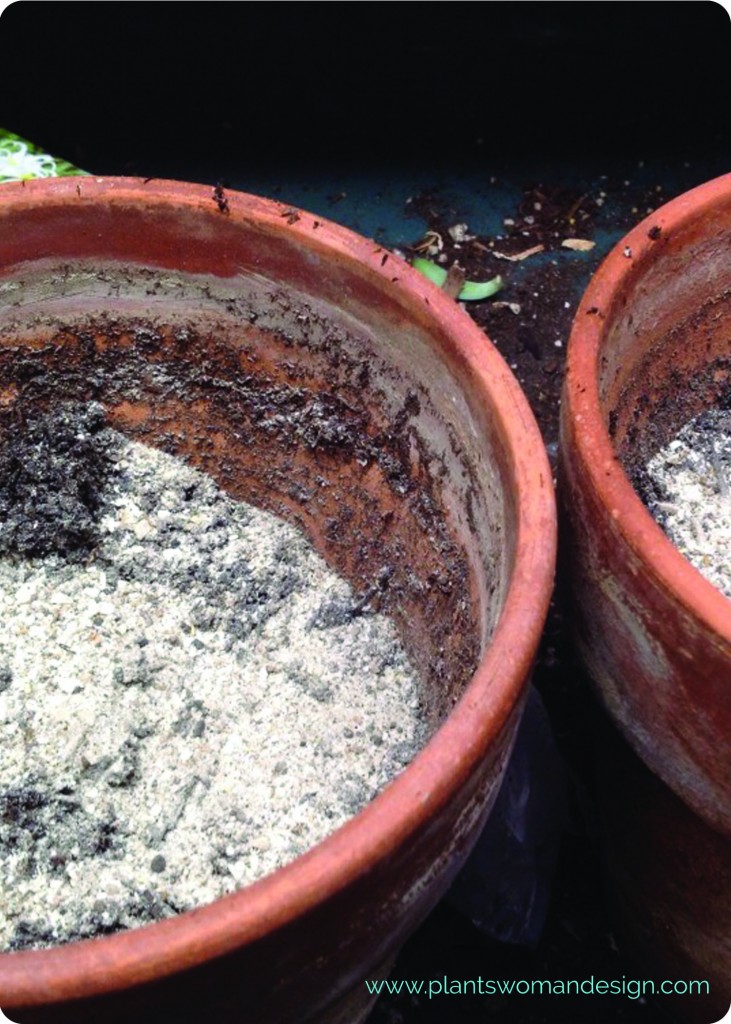
Drop the bulb into the soil gently spreading out any roots that are there.
Cover up the rest of the bulb with soil, water well, and …… wait.
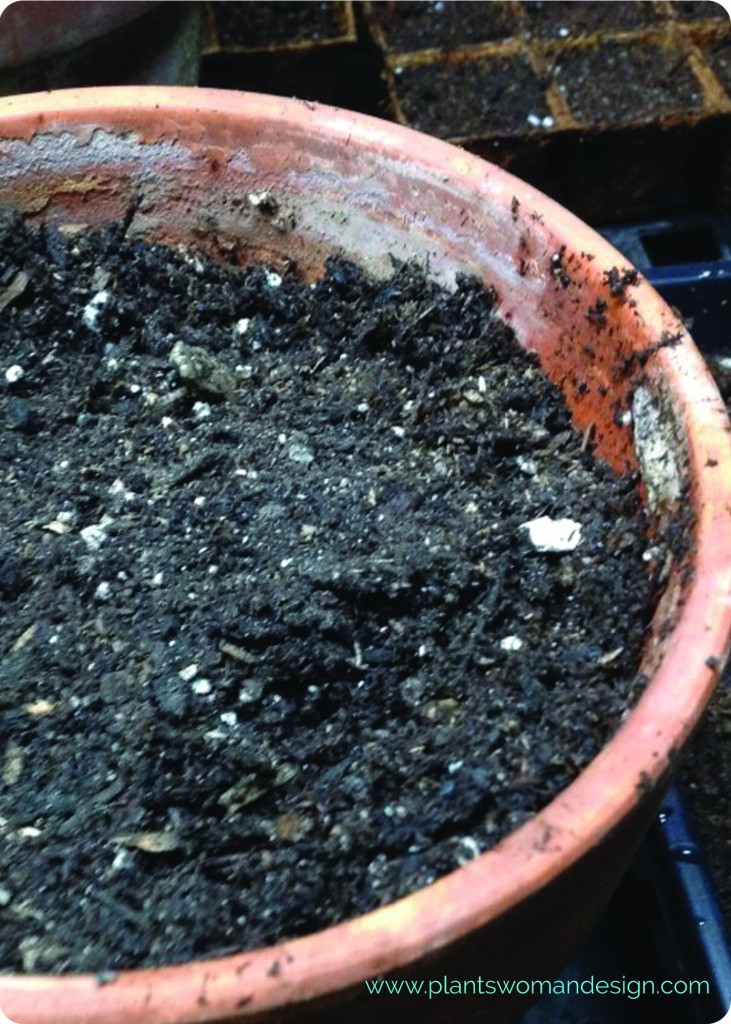 Remember you do not need a greenhouse to do these projects/experiments. Just a sunny window will do and they will be ready to transplant outside before they get very big.
Remember you do not need a greenhouse to do these projects/experiments. Just a sunny window will do and they will be ready to transplant outside before they get very big.
In these days of ‘instant’ there is something unusual about waiting. We don’t really wait for much. I really admire the people who grow from seeds. They are so patient. They have learned the art of waiting and the excitement of seeing a seed sprout and become a wonderful plant. I read recently about a couple who grew trees from seed and live to see them mature and then harvest them. Some had been growing for 40 years. I think that would be hard to do. I do encourage each of my followers to grown something from seed. We will do easy seeds next week (lettuce) and I will start tomatoes by seed indoors later in the season.
Remember to share your gardening exploits with us here on the blog or via Facebook, Instagram (#susan_PWD) and Twitter (@susan_PWD)!



